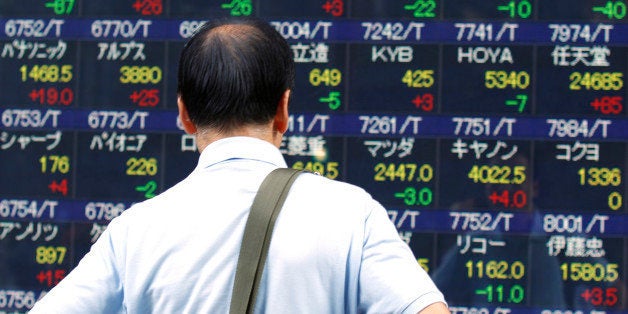
In China, multinational manufacturers are confronting a first-in-a-generation structural slowdown. Vigilance is in order. Panic is not. The bottom will not fall out of the market but some sectors may enter a state of suspended animation.
Chinese consumers, even the most upwardly-mobile ones, are cautious even in the best of times. And China's Millennials, the so-called "Post 90s" cohort, are a particularly wary lot. For the past decade, seven million people have entered a tight job market every year.
Household savings rates will always be higher than in Western countries because institutions that protect individual financial interests are nascent. And acute uncertainty provokes profound anxiety. Swooning stock markets and abrupt currency lurches exacerbate a sense of pervasive vulnerability.
However, let's keep in mind a couple reassuring facts. For the past several years, incomes of mass market consumers, particularly in lower-tier cities, have risen. This is why Chinese exports are no longer as competitive as they were five years ago.
And the slowdown will affect geographic regions differently. The northeast "rust belt" and western provinces are in for particularly tough times. But these areas, dominated by heavy industrial and agriculture sectors, are perpetually penny-pinched. So their impact on national consumer spending on could be muted. (It is a misconception that city "tier" and geography are one and the same. In both coast and inland areas, lower-tier cities are often near to first- and second-tier cities.)
Given these cross-currents, we should expect:
First, "high involvement" categories which are hallmarks of middle class arrival -- cars, premium fashion, watches, foreign travel, premium furnishings, high-end home entertainment equipment -- will be significantly impacted. Until the economy finds its equilibrium, purchases of these expensive items will be considered particularly "risky."
Upper and upper-middle classes fear hard-earned gains, ones made possible by the existing economic order, could be easily lost in the "new normal" era. Anxiety is exacerbated by a gnawing sense that the central government is groping for a new growth strategy.
That said, Xi JinPing, China's de facto emperor, is wearing clothes. The pragmatic Chinese understand patience and a degree of trial and error are productive during "interesting" times.
But they will not open wallets until the coast is clear. And different categories will recover at different speeds.
Publicly-consumed goods that both project status and are not prohibitively expensive will bounce back more quickly than big-ticket items. These items are premium but are not particularly high in terms of out-of-pocket cost. Italian restaurants, French wine and luxury accessories for gifting will suffer less than automobiles, upscale sofas and $10,000 luxury bags.
Second, unless economic winds worsen dramatically, sales of mass market brands should be relatively stable. During the first six months of 2015, Anta sports shoes enjoyed a +24% increase in retail turnover.
However, there will be a flight towards value. Multinational marketers must resist the urge to compete based on price. Local brands boast the scale to operate at low margins and regard "cheap" as a competitive advantage. International brands will never have the operational resourcefulness of mainland players to win a low-cost game.
International brands must recalibrate their price-value equation.
Focus should be on external payoffs rather than internal satisfaction or release. In a back-to-basics environment, celebrating indulgence is risky. Premium yogurt should focus on "delicious digestion that gets you going" rather than pure taste satisfaction.
Brands must highlight inner substance. Casual fashion brands such as Zara and H&M should both balance trendiness with product heritage and quality messages. Rejoice shampoo should reformulate its product to enhance "advanced nutrition for damaged hair." Nike shoes should link a "Just do it" spirit with high-tech performance features.
Finally, the importance of digital channels will continue to proliferate at an accelerated pace. The Internet provides "radical transparency" of both price and value. Chinese consumers will invest more time searching for information, even for relatively low-involvement categories such as cosmetics, sanitary napkins and apparel. Marketers should align "top down" brand messages with "bottom up" social media and e-commerce strategy. The latter should skillfully leverage online opinion leaders and promote advocacy through focused user generated content.
Across China's unsettled commercial landscape, marketers must avoid knee-jerk despair. Now is the time to commit to long-term thinking. China remains a huge and promising market The country's consumer class has achieved critical mass, but brands need to work harder to calm the nerves of disoriented shoppers.